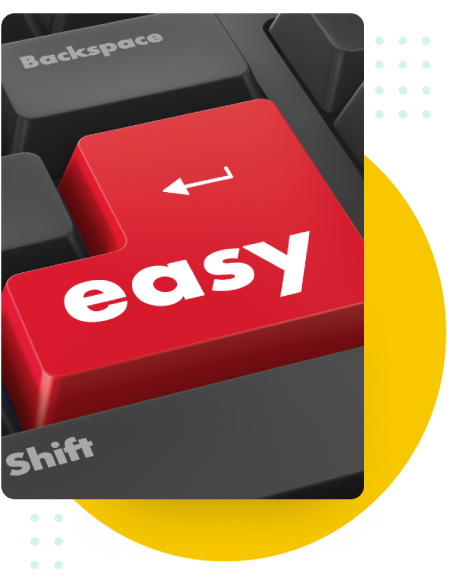Meet Canary7
Shopify Order Management 101: How to Manage Orders on Shopify
Did you know that you can improve your Shopify experience with the right order management system?
Did you know that you can improve your Shopify experience with the right order management system?
Did you know that you can improve your Shopify experience with the right order management system?
Running an online store on Shopify can be the best decision of your life – however, it may also lead to many challenges, such as order management. The benefits Shopify provides you with can help you get thousands of orders everyday, and that’s great for your business… but it also means that you have to process all those orders with perfection, which can be overwhelming.
To help you, we have compiled this guide that will not only provide you with comprehensive information on Shopify, but also tell you exactly what to do if you are seeking help on how to manage a crazy volume of Shopify orders every single day.
Keep scrolling to learn more!
Before we get to learning more about how to manage orders on Shopify, let’s talk more about what Shopify is, and why it is a good idea for an eCommerce business to jump on the bandwagon and choose Shopify to set up their online store.
Shopify is an eCommerce platform that helps business owners launch, run, and expand their operations. There are millions of people who utilise the platform to set up their businesses – which means that as a platform, Shopify gets a lot of traffic. According to them, this traffic allows them to gather the right insights for all businesses, on the basis of which they create new features, and update the existing ones. Essentially, Shopify can be considered as a one-stop shop for all your business needs – which is perhaps exactly why it has attracted millions of merchants!
If you’re wondering why running an eCommerce store on Shopify is the first choice for many businesses, it’s simply because it provides you with amazing benefits that well, business owners just can’t say no to! These benefits include:
Let’s be real: no one enjoys hassle or unnecessary work when a simpler solution is available. One of the best things about Shopify is just that: it is so very simple and easy to set up! You don’t have to spend hours upon hours setting your store up, and neither do you need those pesky technical skills to get things going. What’s even better is that the user interface is easy to navigate. For this reason, many businesses, especially those that are just starting out, gravitate towards Shopify!


One of the biggest concerns people have before they venture into the world of eCommerce is where to get support when things go wrong, considering how things can take a turn for the worse at any given time. Shopify steps in and eases the doubts and confusion of its users by ensuring that experts are available to assist people 24/7! No matter what your question, you will find answers. Not only that, Shopify also fosters a wonderful community that has your back, which means that many business owners can connect with and learn from each other!
Don’t we all just love the feeling of having the whole world at our disposal within a tiny screen? Mobile-friendliness and optimisation is an important aspect for many business-owners, as this means that their store can resonate with the millions of mobile users out there. Shopify helps them create a web store that is mobile responsive and looks great on any mobile device: be it a mobile phone, your iPad, or any other smart device. Not only that, but business owners can also manage their store from their phones. Think of that: no matter where you are in the world, you can tap into your store and make sure everything is under control!


As a business owner or manager, you should know that simply setting up your operations is not enough. You need a well-planned marketing strategy, as well as all the SEO help you can get in the world. Well, for people who choose Shopify as their eCommerce platform, this isn’t hard to achieve! Shopify provides its users with great marketing tools – you can make use of social media, email marketing, and it will help you facilitate product reviews as well. You can add landing pages of your choice, and even generate coupons and discount codes. Big business or small – who could say no to that?
When you spend so much time, money, and effort into building your store, it’s protection becomes your top priority. This is why for many businesses, the first factor that goes into choosing an eCommerce platform for their operations is security. Shopify is great in this sense because it protects your sensitive data and company information. If you want to choose a platform that offers you PCI and SSL certification to encrypt your data, Shopify should be your go-to option.


If you want to improve your store with the help of features from other other apps, Shopify lets you do that as well. It doesn’t limit you to the solutions it provides, which is for the best because there is so much more you can do with other apps in connection with Shopify. For example, a Shopify order management system will help you sync all your orders from Shopify from your orders from other sales channels, which will allow you to centralise all your data, have a holistic overview of your business activity, and manage multiple sales channels from one location.
There are many more benefits to using Shopify – but you get the picture! Whether you are someone who is already on Shopify or someone who is currently deliberating whether to choose Shopify or not, Shopify is likely to make your eCommerce experience a lot better.
Let’s have a run down of all the best practices you need to take a not of if you want your Shopify venture to turn into a success:
The importance of aesthetics cannot be understated when it comes to attracting potential customers. No matter how good your products actually are, unless your website flaunts a beautiful appearance, your customers won’t gravitate towards buying from you – that’s just how it works.
Luckily, making your store beautiful on Shopify is quite easy. It has over 100 free and paid themes that you can use for your eCommerce store. These themes are not only aesthetically pleasing, but can also be customised in accordance with the needs of industry, regardless of which one it is.
So, to create a beautiful , aesthetically superior online store, you can rely on Shopify themes. However, you must also remember that not every theme will go to your store, so you should choose it carefully. One way to do this is to check the reviews for the said theme before you actually implement it in your story – this way you will know if there are any problems with the template. You should also have some prior coding knowledge if you want to customise the theme to go beyond the generic and actually present the right image of your webstore.
To succeed in the world of eCommerce, you need to level up in terms of search engine optimization. Search engine optimization, also known as SEO, will be your gateway to ranking higher on search engines. What this means is that every time a user searches for a word that is related to your business, they will find your web page in the search results. SEO is great in terms of increasing your traffic and attracting leads.
If you want to improve the ranking of your Shopify webstore, there are quite a few tips and tricks you can make note of. Firstly, you should carry out your own keyword research. With the amount of SEO tools available in the market today, this shouldn’t be hard. Once you have a good understanding of which keywords you should be targeting, you should get to optimising your content for those words. This includes the meta-data – Shopify allows you to optimise meta-data with relevant keywords as well, which means that you have a great opportunity to improve your SEO score.
Also, remember to avoid duplicate content as this can have a negative impact on your store. Everything from your landing pages to your product descriptions should have unique content, which will help you get yourself ahead in the SEO game.
A landing page is the first point of interaction between you and your website. In order to ensure that the customer chooses to proceed and actually engage with your business further, you must build a landing page that sends the right message.
For this, Shopify allows you to integrate with helpful apps like MailChimp, Landing Page Builder, and countless other tools that can help you build a strong landing page.
Just make sure that your landing page is unique, includes your branding, and convinces the customer to interact with your brand. Salesy language is perhaps not the best thing to include in your page, but you must also be confident in terms of what you can provide to the customers. The bottom-line is that a landing page is a tough nut to crack, but it is also worth the effort because it will help you attract your audience base in all the right ways!.
You must have heard of the phrase: content is king. Well, there is truth to that, even for eCommerce businesses. Without a proper content strategy, you cannot possibly expect your business to succeed, especially if you are an online retailer. This is because in the online realm, the competition is quite cutting-edge, and the only way you can hope to oversee your competitors is if you push forward with a well-planned content strategy.
There are quite a few factors that go into creating the perfect content strategy. For example, blogging. Publishing useful content for your customer base to rely on is not only a great way of building traffic, but it will also help you establish yourself as a thought-leader in your industry. When it comes to a blog, your number one goal should be to create content that is engaging, helpful, and also unique. Also, don’t forget to add images, video, and other exciting visuals such as GIFs and animations, because these can help your content stand out as well. As long as you check these boxes of the list, your customers simply won’t be able to say no to your content.
With the help of Shopify’s future publishing, you can post your blogs, product, page, and collections whenever you like, without being available on the required date and time. This is very convenient, and can help you test out different times and see which one works the best for your content in reference to the audience.
Now, let’s get somewhat more operational. Even if you do everything that we have mentioned above, there are still chances that you are neglecting your business if things don’t go smoothly at the backend of your business; particularly with order processing.
Whether you get a small number of orders everyday or have to send out a monumental volume of orders, you need to ensure that you are handing these orders seamlessly. This is because the more efficient your order processing is, the faster these orders can be out for delivery and in the hands of the customers. Considering that we are all customers in one or the other segment of our lives, it is safe to say that there is nothing one likes more than fast delivery.
But, how can you do that with Shopify? Well, there are quite a few ways, as discussed below.
Enter your details to book a demo of the Canary7 WMS, built for 3PLs, and fulfillment houses.
Before getting to the specific ways you can manage orders on Shopify, let’s have a brief look at what order management in general is. If you are looking for a more comprehensive guide on order management and everything you need about this process, you can checkout The Definitive Guide to Order Management Systems.
Order management is the process of organising all your orders, and making sure that your customers get their stuff on time. Pretty simple, right? Well, only in theory. In practicality, it takes a lot of effort to create a seamless order management process, and for many businesses, this is perhaps one of the biggest challenges that they face in the course of their operations expanding.
These basic tools offered by Shopify allow you to:
As you can see, there are quite a few things you can do from within the Shopify itself, which can help you ensure that the orders you get from Shopify are easily dealt with. However, relying on just these features can lead to some complications as well.
One of the biggest problems is that Shopify order management doesn’t offer multichannel order management support. This means that if you are relying on Shopify’s features, you can only manage the orders you get on Shopify, not the orders you get from any other channel.
In today’s time and age when businesses are dabbling with multiple sales channels, this is a huge problem. If there is no sync between all these channels as well as your overall inventory, how can you ensure that everything is in order, and that you actually have all the products available?
As you can tell, this poses a great challenge for business owners. However, it’s not something that can’t be fixed – thanks to Shopify order management systems.
If you want to know what order management systems are in general, refer to our guide on this topic. A Shopify order management system is a software solution that can help you take care of not only your Shopify orders, but also sync them with orders from other channels, as well as your overall inventory and warehouse activity.
The reasons these order management systems are a better option than simply relying on the features already provided by Shopify is that they help you centralise all your data in one place, which means that you have in control not only your Shopify orders, but all the orders you’re getting. For example, if you are a brick-and-mortar retailer but also have an online store, a Shopify order management system can help you amalgamate your activity on both these platforms and take care of your orders on both these places! This also works if you are selling on any marketplace platforms such as Amazon or eBay.
Some important features of an order management system include:

One of the most important features, of course, is that it helps you manage Shopify orders. A good software will help you take control of your orders the second they are placed in your store, and start the fulfilment process for them as soon as possible. This will also include syncing them with orders you get on other channels.
A good Shopify order management system will help you integrate your orders with other platforms, especially Amazon and other shopping websites. Doing this will help you make sure that your customers across different channels experience frictionless buying and are impressed by the overall services you provide them.

The order being processed from your end doesn’t mark the end of its fulfilment journey. To ensure that it is safely in the hands of your customer, you must enable tracking. If your order management system offers this, it will be easy for you to keep an eye on your consignments throughout shipping, and also update the customer with the status of their order throughout. Tracking features also allow you to generate data, which can later be used to empower other departments within your company. Overall, these features can really help you keep everything in control and hence, are a necessary aspect of your business.
You will find that staying updated with the order fulfilment process throughout will really help you with early problem detection, as well as speeding up things and ensuring that your customers have their products with them on time. A Shopify order management system that can give you real-time updates on not only your orders, but also your inventory management will be of great help, and hence you should look for this particular feature in your order management system.

Setting up an online store on Shopify will bring you a lot of success – but only if you set it up the right way. A huge part of this depends on your order management tactics. Luckily, it’s not hard or complicated to ensure that your orders on Shopify, as well as on other channels, are being managed properly. All you need is to integrate your Shopify with a good order management system, and you will witness your order management journey improve by miles.
While you’re at it, why don’t you try Canary7? We offer order management, inventory management, warehouse management, warehouse control, and labour management, which ultimately makes us a one-stop-shop for all your fulfilment process. So, why don’t you book a free demo and take our solutions out for a spin? You won’t regret it!
Enter your details to book a demo of the Canary7 WMS, built for 3PLs, fulfillment houses, and online retailers.
You can see how this popup was set up in our step-by-step guide: https://wppopupmaker.com/guides/auto-opening-announcement-popups/
You can see how this popup was set up in our step-by-step guide: https://wppopupmaker.com/guides/auto-opening-announcement-popups/